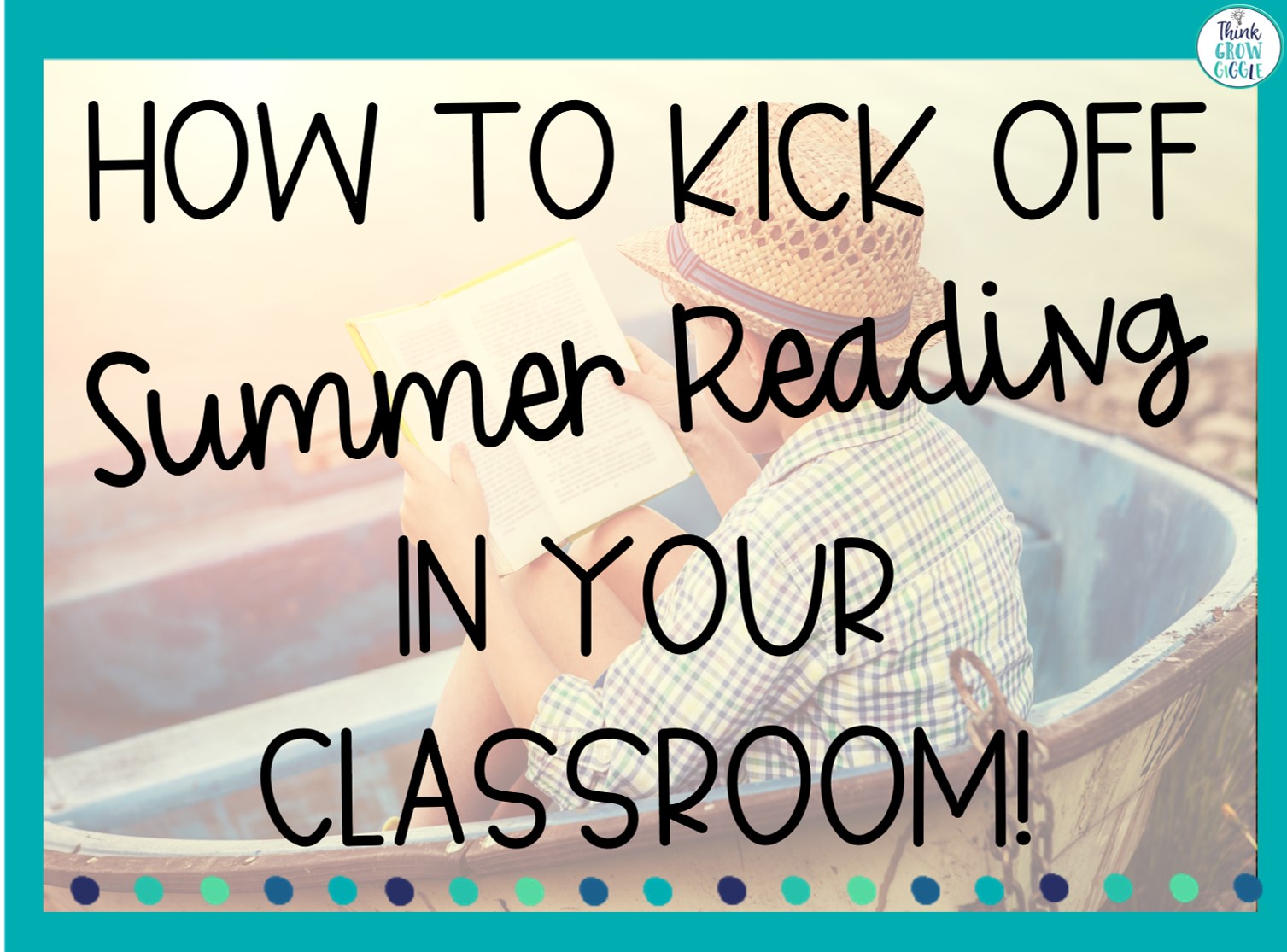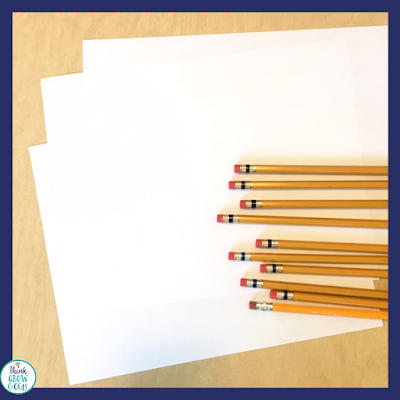Are
you looking for field day tips to make field day activities and management run
smoothly on the big day?
Between planning the field day games, rotation
schedules, and activities, we sometimes forget to focus on classroom management
and good sportsmanship during field day. This is a must! Setting clear
expectations for behavior truly helps students stay focused and have an amazing
day! And let’s be honest, it makes our day as teachers a lot easier, too!
My
students are always bubbling with excitement before, during, and after field
day each year. Their excitement as the big day draws near seems to overtake our
classroom routine and learning. By harnessing all of that positive excitement
into lessons and activities focused around team work, perseverance, and good
sportsmanship, you and your students will have a fun filled, problem free field
day experience.
To me, that is what field day is all about…team work,
perseverance, and good sportsmanship.
I
have taught at three different schools, in three different districts, and each
school and district had their own way of running field day. The one thing that
remained the same at all of the different schools is that on the day of field
day, I was ultimately in charge of my students.
Yes, the PE teachers organized
the events, and yes, there were parents and volunteers on hand to help, but I
was the one responsible for the management of my students and ensuring that
they stay safe, happy, and having fun. No matter how amazing your classroom
management is when you take the students out of the classroom, your management
strategies need to change, especially on exciting days like field day.
Try these before, during, and after field day tips to help manage
your students and have a successful field day.
Be sure to grab these FREE teamwork posters before the big day!
👉BEFORE FIELD DAY TIPS
Talk
it out!
Discussing
field day expectations, working together as a team, perseverance and good
sportsmanship must happen before field day begins. I am not talking about
quickly bringing it up the ten minutes before you go outside for field day. I
am talking about taking a little bit of time each day about a week before field
day to discuss each of these.
I like to use our morning meeting time to engage in discussions on these topics. We discuss what each is, how we can display it,
and what it looks like. We also take some time to read about each and create
illustrations of what we can expect to see during field day to show that we are
all working together, persevering, and showing good sportsmanship.
We also
create class expectations for field day. I love creating these expectations
with the class so that students learn what their peers expect from them. It
truly helps students act in a way that is respectful of their classmates’
wishes and eliminates poor behavior such as, the same people taking over each
game or station that can sometimes be seen during field day.
If you are looking for the perfect picture book to read to kick off all of your field day discussions my favorite is Miss Nelson Has a Field Day, written by Harry Allard and James Marshall.
Get Yourself Organized!
Before
field day begins get yourself organized!
Grab a set of student name tags, or you
can use masking tape if you do not have name tags, and write three things on
them: your students’ names so that volunteers can refer to everyone by name
(this also helps eliminate unwanted behavior) and randomly write A or B on each
tag and 1, 2, 3, or 4 on each tag.
Be
sure that half your class has an A or B and about ¼ of your class each has a 1,
2, 3, or 4. This is a super simple time-saving way to divide your class into two
teams or four teams depending on the station you are at. It also eliminates the
need for students to pick teams. You can also mix up your groupings by grouping
1 and 2s against 3 and 4s if you happen to have a lot of stations that divide
the class in half. That way you are not always using team A vs team B.
Get Your Students Organized!
As
field day draws near, be sure to send home a reminder for students and parents
about your upcoming field day. The two big things I like to remind my students
about field day is to make sure that they bring in a water bottle with their
name clearly written in permanent marker (especially if they are bringing in a
store bought water bottle like Poland Springs) and to wear the class decided
upon colored t-shirt.
Ask your students ahead of time what color t-shirt they want
to wear on field day. Having students wear the same color t-shirt makes it easy
to keep track of your students on the field. It works even better if you have
each class in a grade level wear a different color. Then your students will
surely stand out among the crowd!
👉DURING FIELD DAY TIPS
Last Minute Reminders
Since
there is so much to do on the days leading up to field day, there is little to do on field day except have fun! After reminding
students everything we talked about when it comes to good sportsmanship,
perseverance, and teamwork, I do offer
my students two important pieces of information that they will need during
field day. We always discuss the bathroom procedure that is in place before
going outside and we come up with a class meeting place, too. That way if there are grade-wide or school-wide activities, we all know where to meet before heading back inside. Now it is time to go have fun and make some
memories!
👉AFTER FIELD DAY TIPS
Reflect and Make it Meaningful
Now
that field day has ended, and you have all had fun and re-hydrated, what better way
to end the day, or week, than with some reflection activities.
I love to have
students think about the day’s events. What did they love about the day? What
was something new they did? What did they accomplish that they are proud of?
Right after field day is a great time to have them reflect on their day in written narrative form while the activities are fresh in their mind. The reflections my
students complete after field day are among their best writing of the year!
Keep Strengthening Classroom Community
What
better type of reflection to do, than one that continues to build and
strengthen your classroom community? My favorite activity after field day is
when the students give awards to each other! It is such a simple, yet
meaningful activity to get the kids recognizing each other. Each student gets
an award from another student, so everyone is recognized. Here is how:
- Each student writes their name on a small piece of paper and folds it into fourths. Put all of the names in a bucket.
- Have students one at a time, randomly draw a name from the bowl, making sure that they did not pick themselves.
- Students will create a field day award to give to the student whose name they picked. The award they create should reflect a positive attribute the student showed during Field Day. Below the award, the student explains why they created the award for that student. When students are done writing, they can decorate, color, and draw a picture on the back for their classmate.
- When all students have completed this activity, select one student to share their award and hand it to the person they created it for. Then that student will share their award with the student they created it for. And so on, until all awards have been read and delivered.
- I love watching the kids award each other after field day for their positive actions. It is much more meaningful than winning any trophy since it came from their peers. This is simple to do using just plain paper and pencil. If you want a more formal writing lesson to complete this activity, click HERE.
Field
day is a time to reflect on important life lessons that have been learned
throughout the year and come together as a class to make even more amazing
memories. I love field day and turning it into many different teachable moments.
Want to make more end-of-year memories? Click HERE to read my favorite books to share with students at the end of the year and grab free activities, too!
FREEBIE ALERT! Want
to try out one of these activities for free?
Click HERE or on the image below and then view the preview of this field day product.
A sample page all about good sportsmanship is included on page 8 of the
preview. Simply print that page and try it out with your students! Enjoy!
*This post contains affiliate links.
Become a subscriber and scoop up these FREE graphic organizers today!



































